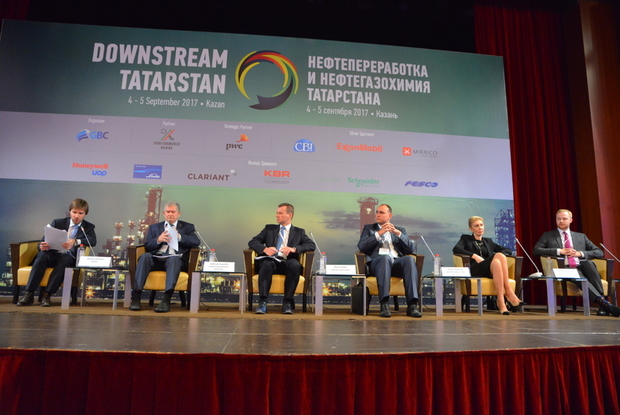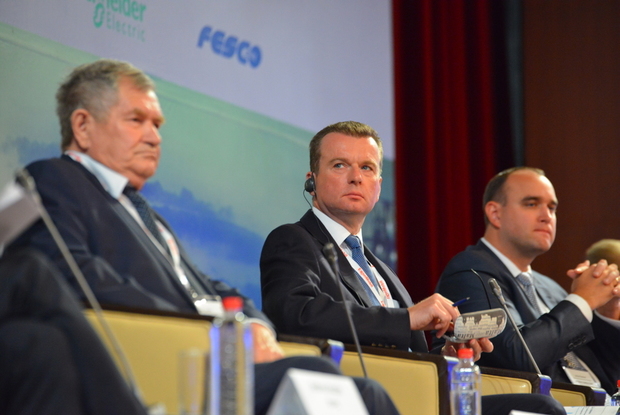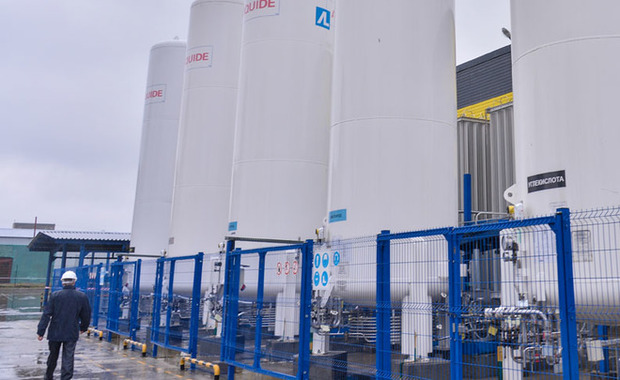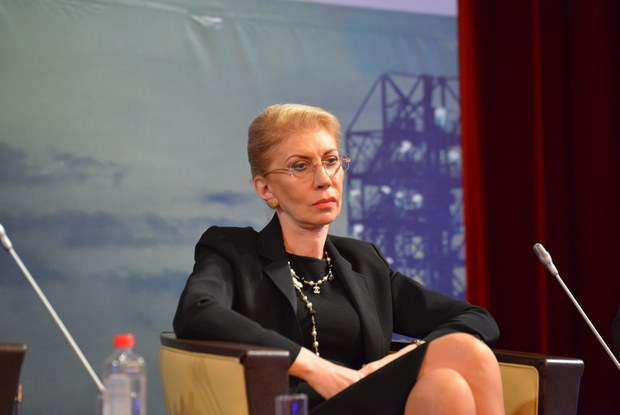''Our forecast of oil prices by 2020 is $65''
Global Practice Lead of Wood Mackenzie about alarming future of benzene manufacturers and glowing perspectives of petrochemists
100$ per barrel: at last forget these exorbitant oil rates, Global Practice Lead of Wood Mackenzie's Refining and Marketing research Alan Gelder urged on 4 September at ''Downstream Tatarstan'' international conference whose 40-minute speech was the pièce de résistance of the first day of the conference. And it is no surprise because the world expert presented an updated long-term forecast of oil prices that the audience listened to with great interest. Knowing about the Achilles heel of Tatarstan oil production, he pointed out the fact that the sector will face a very strict sulphur content limit by 2020, which is not to pass 0,5% instead of today's 1,5%. And the lasting idea of oil quality bank will be inevitable and unavoidable. Realnoe Vremya's reporter tells what key tendencies in the world oil market Alan Gelder pointed out and why Tatarstan has no way but refine oil on the spot.
Petrochemistry in the grip of high prices
Formally, the first ''Downstream Tatarstan'' international conference, which opened in Korston Culture and Leisure Complex under the aegis of consulting partners of Tatneftekhiminvest-holding PJSC on 4 August, is aimed to update the development strategy of the country's gas and petrochemical complex adopted as early as 2013. In the last 10 years, export earnings have generated huge surplus profits. So few of Russian oil companies except Lukoil and Tatneft invested in new oil refining projects. ''In the rating of the biggest petrochemical manufacturers where German BASF is the leader with a revenue of $97 billion, Russia turned out at the bottom with a tiny indicator – just $25 billion,'' Director General of InfoTEC-consult Tamara Kandelaki told during the plenary session.
But as soon as world oil prices collapsed, the rosy picture of the external well-being suddenly changed and oil began its unpredictable pricing rally. And the movement of world rates is the most interesting thing for everyone without exception.

The updated forecast was presented by Global Practice Lead of Wood Mackenzie's Refining and Marketing research Alan Gelder, the precision of his estimates is close to 90%. But Director General of Tatneftekhiminvest-holding PJSC Rafinat Yarullin delivered a speech before him. Discounting the expert's sad conclusions, he reported that the Heavy Residue Deep Conversion was to open in Tatarstan at TAIF-NK in late 2017 and there would be a shift to production of light oil products by 2025 or ''zero mazut''. So TANECO's oil conversion rate will also reach 97%. 30 minutes were enough for him to enumerate all the key projects in oil refining and petrochemistry.
Low oil prices to stay for long
The world price will remain low in the short run, Alan Gelder expressed the basic position from the first minutes of his speech. In his opinion, this tendency is mainly conditioned by intensive implementation of sulphur projects in Texas where sulphur oil production rate has recently grown from 70,000 to 1 million of barrels per day. But the growth of supply noticeably exceeds demand even if the consumption of oil products remains stable in China, grows in India but falls in Europe.
''Our forecast of oil prices by 2020 is $65,'' Alan Gelder stated. According to him, it is higher than now but they think there will be a growth by 2023-2024, then there will be a small decline. When prices grow, when they try to reach the highest indicators, petrochemists will be able to involve many traditional oil fields in exploration, which are more expensive than sulphur oil by default. Then, oil will suddenly fall like a sinusoid. All in all, the spiral of evolutionary development will lead to an urgent need to look for other oil reserves by the late 2020s.

As the key tendency, he points out the fact that oil export from the USA at the peak will pass the volume of export from many OPEC exporters. He says it is going to be in 2023-2024. The USA's export volume can total 2-3 million barrels per day, which makes the USA the biggest resource producer. Having become the key player, the USA won't increase investments in oil refining if it doesn't reach 20 million barrels per day, he forecasted a possible scenario for the authors of the oil refining development strategy.
Prices for Russian gas not to grow in the next 6-7 years
Unlike sharp market fluctuations, it seems that gas prices are not going to change. He forecasts that if they look at the gas situation, they think low prices for natural gas will conserve at a low level for 6-7 years. According to him, serious capacities have been recently attracted to production in the USA and Pacific Rim countries. But here the further path of prices will obey the market pressure. Liquefied gas supplies from the USA will compete with Russian natural gas by 2020. Alan Gender supposes that money will be invested in new projects only if demand for gas grows. And it will just aggravate the competition between Russian natural gas and exported liquefied gas in Europe. In addition, prices for natural gas will be low in Asia, which will become a stage of international competition. Methane is likely to remain inexpensive.
Sulphur purification
Forecasting an apocalypse in the feedstock market, Alan Gelder evaluated perspectives for oil refining as glowing. One can say that the luck favours those who are against primitive export. In their opinion, reduction of oil refining capacities in Europe, Australia and Japan and decrease of reserve capacities allow to optimistically look at this sphere of investments. But there is a pitfall here. Alan Gelder told that legal sulphur content limit would come into force by 2020. So there is uncertainty in petrochemistry. The sulphur content limit will considerably tighten: the sector will switch from 1,5% to 0,5% by 2020.

He stressed it would be the most serious reduction in the history of such events. As a result, oil refineries will need to produce more middle distillates, and diesel fuel will considerably become expensive. So they expect diesel and gasoil prices to double against oil price. Alan Gelder specified that the factor of huge uncertainty due to the imposition of new legal requirements will be decisive here. And the shipping industry can be the victim of the situation because it is the major diesel fuel consumer.
Continuing talking about oil refining development, the speaker noted the arisen tendency for bigger projects to provide competition at the global level. The biggest oil refinery is built in Near East that can become capable of competing. They can deliver distillates to Europe at interesting prices, they have technologically advanced equipment. In addition, shipment distance is not big.
Electrocars are coming
The fact that the growth of demand for motor fuel is decreasing around the world is a negative feature for oil refining. So Gelder warned that this year demand for benzene in the USA has reached the highest indicator, then it will fall. European demand is reducing. Electrocars are coming. And they expect more car fans to use eco fuel. Those oil refineries that produce car benzene will feel unconfident.
On the basis of these trends, Global Practice Lead of Wood Mackenzie's Refining and Marketing research Alan Gelder quite positively evaluates perspectives of petrochemistry. He says that petrochemistry is the biggest downstream consumer. The growth of demand for petrochemical products will continue, particularly in countries with developing economy. These are Asian countries and China. Demand for olefins grows 5-6 million tonnes a year.

From Alan Gelder's point of view, 3-4 pyrolysis plants need to be built to cover it. So if we look at the geography, we can be speaking about a wave of investments in North America in the next 5 years. A serious demand for ethane led to the construction of new factories both in China and the USA. At the same time, he emphasised that even if ethylene will be made of ethane by 2012 in the world (that's to say, from gas, not naphtha pyrolysis), naphtha will still dominate in the pricing mechanism.
It means that ethylene price will depend on world oil price. Nowadays Russia has conserved only 11 of 14 pyrolysis plants, Director General of InfoTEC-consult Tamara Kandelaki told after him. She noticed a curious paradox in their production dynamics: despite the fall in production volumes, profitability annually grows by 5%. In the end, she gave the petrochemists practical advice – to accurately follow the formulation of plastic products. ''I asked one of my clients why he did not work with IKEA. He said they were so strict. When they did not have necessary components, they added what they had. It would not fit them.''